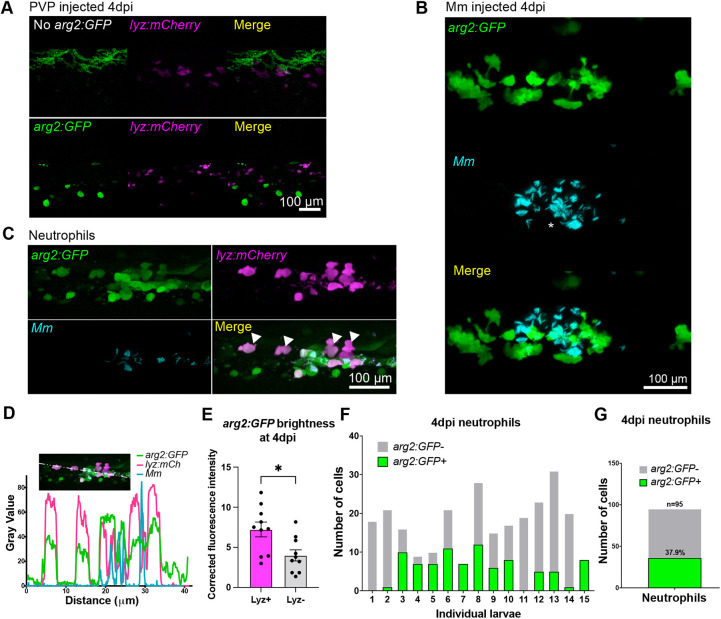Fig. 5.
Granuloma-associated neutrophils express arg2:GFP. (A) Fluorescence confocal micrographs of 4 dpi (5 dpf) embryos [lyz:mCherry line crossed to the wild-type line (no arg2:GFP) or arg2:GFP line] after PVP control injection at 1 dpf. Only pigment autofluorescence and ionocyte-specific expression of arg2:GFP is present. (B) Fluorescence confocal micrographs of 4 dpi (5 dpf) arg2:GFP embryos after Mm infection at 1 dpf showing granuloma-associated arg2:GFP-positive cells. (C) Fluorescence confocal micrographs of 4 dpi (5 dpf) embryos (arg2:GFP line crossed to the lyz:mCherry line) after Mm infection at 1 dpf, showing neutrophils positive for arg2:GFP (filled arrowheads). (D) Line analysis of a cross section through a granuloma showing fluorescence values of arg2:GFP, lyz:mCherry and Mm. (E) Corrected fluorescence intensity of arg2:GFP in lyz:mCherry-positive neutrophils compared to that in cells with immune morphology that were lyz:mCherry negative at 4 dpi (5 dpf). Data shown are from n=10 larvae accumulated from three independent experiments. The P-value was calculated using unpaired two-tailed t-test. *P<0.05. (F) Graph showing the number of arg2:GFP-positive and -negative neutrophils in a 40× region of interest in the caudal vein region that contained Mm bacteria, at 4 dpi (5 dpf), in individual larvae. Data shown are from n=15 larvae accumulated from three independent experiments. (G) Graph showing the percentage of arg2:GFP-positive and -negative granuloma-associated neutrophils at 4 dpi (5 dpf). Data shown are from n=95 cells from 15 larvae accumulated over three independent experiments.

